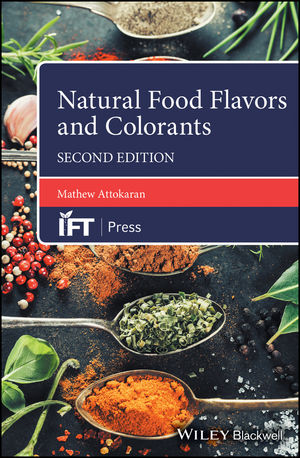Consumers looking for ethnic experiences create opportunity for innovation
Increased popularity of ethnic cuisines leads to consumer interest.














It should come as no surprise that taste is king and is one of the most important attributes when it comes to the success of a food or beverage product. In fact, based on the International Food Information Council’s 2017 “Food and Health Survey,” taste was rated the top factor among those tested, with 84 percent of respondents stating taste impacts their food and beverage purchase decisions.
Many companies are predicting and forecasting what flavors will be trending and growing in popularity. Two overarching themes are an increased interest in bold flavors and authentic ethnic cuisines.
According to the 2018 Flavor Charts from Kerry, Beloit, WI—an annual program to identify growing and emerging flavors—Asian cuisine has been around for the past several years but it is ready to take America by storm. Expect to see growth in Korean, Filipino, Indonesian and Indian flavors and cuisines.
The 2018 Flavor Forecast from McCormick & Co., Baltimore—the company’s annual flavor trend report—also predicts growth in globally inspired flavors. The report highlights East African cuisine, noting this region is, “a treasure trove of flavor,” with signature seasonings representative of regions like Tanzania and Ethiopia being explored across the globe.
Theresa Lancaster, insights and content manager, McCormick Flavor Solutions, shares how these globally inspired trends can be translated for snack products. “For example, in Japan, furikake seasoning is sprinkled on everything from rice and noodles to veggies and seafood. A coarse mixture of seaweed, sesame, dried seafood, sugar and salt, it offers umami deliciousness and a subtle sweet flavor which could work well on sesame crackers, seaweed crackers or even popcorn.”
Soumya Nair, director or market insights, Kerry, notes the dominance of cheese in salty snacks is undeniable—but that people are yearning for something new. “As ethnic diversity gains a mainstream status on the American palate, there has been a resounding movement of savory snacks with ethnic spices, such as kimchi, tamari, Thai curry, chai and Korean barbecue.”
According to Technomic’s 2017 “Flavor Consumer Trend Report,” 45 percent of consumers surveyed said they crave bold flavors. These numbers are up from 41 percent in 2015. Bold flavors can be described as intense, spicy, hot, heat, sweet heat and strong, just to name a few.
“Graduating from sriracha, spicier flavors such as garam masala, ghost pepper, tajín, wasabi and ancho are only a handful among the spice explosion that Americans are eager to experience,” says Nair.
Smoke is also expanding to applications beyond meat. According to 2017 Mintel Menu Insights data, smoked flavors are gaining popularity in restaurant side dishes, growing 18 percent since 2015. They anticipate seeing increased growth of smoked flavors in packaged goods and snacks in 2018.
Also, the National Restaurant Association’s “What’s Hot” 2018 Culinary Forecast also cites the use of smoky flavors and ingredients in dessert applications, creating a smoky-sweet flavor experience.
Flavor platforms
Sensient Flavors, Hoffman Estates, IL, recently launched a new line of flavors called Cheese Sensations, utilizing proprietary technology that can be used as part of a snack seasoning application. “The combination of Sensient’s technical dairy components and a depth of expertise in savory ingredients has allowed us to develop this new range of natural cheese flavors,” says Roger Lane, marketing manager, savory flavors. “Cheese Sensations provide a more well-rounded flavor profile when compared to cheese powders alone, but we have also taken taste complexity to the next level. Via proprietary ingredients, we’re able to deliver improvement in these flavors’ ability to enhance a product’s perceived mouthfeel and sodium perception.”
McCormick is continuing to expand its offerings leveraging its Flavor Cell encapsulation technology platform, which includes new flavors applicable to bakery and extruded snack categories. The line offers versatility via different delivery systems, protection and flavor release. “Within this family of solutions, we offer flavors that can withstand the processes of fermentation, heat from baking, high shear and even some extrusion processes,” says Teri Mascuch, director of technical innovation. “Additionally, Flavor Cell maintains well through freeze/thaw cycles with the expected flavor release and eating experience upon baking.” The flavors can be applied topically or in the dough, and are available in a dry format. She notes garlic flavor, utilizing Flavor Cell encapsulation technology, can deliver robust garlic flavors without interfering with expected gluten development and structure in bakery applications.
Fermented flavors and artisan bread go hand-in-hand, and AB Mauri North America, St. Louis, offers a line of Aromaferm Cereal Ferments that provide clean-label solutions for creating notable flavors in artisanal-style breads. “These ready-to-use products from a variety of fermentations provide a number of key benefits to both our industry customers and ultimately end-use consumers: unique flavors, ranging from European sponge and dough to San Francisco sourdough; consistent taste, shelf life and time savings; and authentic artisan texture, aroma and rustic coloring,” notes Paul Bright, innovation manager. One example is the Wheat and Malt Ferment 110, which contributes mild and mellow fermentation flavor, best suited for use in artisanal breads, baguettes, sandwich bread, pizza bases and rolls.
Natural, clean-label color
The appearance of a product is a vital sensory attribute. Before consumers taste the food, they develop an expectation of what it will taste like based on the color and appearance. One of the most widely used food coloring is caramel coloring used across a broad number of applications, including breads, cookies, cake mixes, chips, crackers and popcorn.
There is a shift to replace FD&C certified colors with more natural options. “Caramel colors are often the first replacement evaluated in these situations,” says Brian Sethness, executive vice president, sales and marketing, Sethness Products Co., Skokie, IL. “Caramel colors will not offer the same bright shades as these dyes, but oftentimes companies do not want their finished product to look ‘artificial’ or too bright.” He notes caramel colors are more subtle in color, and one of the benefits is that they are produced under high heat conditions so they are stable across a broad range of manufacturing processes.
Class 1 Caramel Colors, which are defined as minimally processed, do not use ammonium or sulfide compounds in production and have the European designation E150a, are becoming the fastest-growing segment of caramel colors since they meet consumer demand for cleaner labels, notes Sethness. “The most-popular new Class 1 items we offer are our Certified Organic OC234 Powder and our Non-GMO Project Verified SB245. With the growth of organic snacks, there are minimal coloring options, and the OC234 fills that niche effectively. It is being used frequently in new organic breads that are sold into major natural food grocery chains.”
The best of both worlds
Savory snacks and baked goods are on the rise, and such products can often benefit from the umami taste impact contributed by traditionally brewed soy sauce—which also adds a natural color note.
“As it ferments, brewed soy sauce develops hundreds of distinct flavor and aroma components, including sweet, salty, sour, bitter and umami notes. Used in the right balance with other ingredients, it can be a versatile seasoning and flavor enhancer with functional benefits across multiple formulation targets, far beyond traditional Asian applications,” says Yusuke Hiraiwa, national industrial sales, R&D manager, Kikkoman Sales USA, Inc., San Francisco.
Kikkoman recently launched two new Non-GMO Project Verified products, Granulated Gluten-Free Tamari Soy Sauce-NGP and a Granulated Soy Sauce KF-NGP. Both products are produced from non-GMO soybeans grown in North American and produced using Global Food Safety Initiative protocols. The ingredients have anti-caking and non-dusting properties, which enables them to be used in topically in seasoning applications. The Granulated Gluten-Free Tamari Soy Sauce-NGP, which omits wheat, is certified gluten-free by the Gluten-Free Certification Organization.
“For breads and rolls, soy sauce helps blend the yeast and grain flavor notes, and adds color,” says Hiraiwa. “For chips and crackers, soy sauce helps blend savory flavor, adds complexity, moderates sweetness and adds color.”
Carolina Innovative Food Ingredients (CIFI), Nashville, NC, notes an increase in the consumption of nutrient-rich sweet potatoes—which can also deliver taste, flavor and color attributes. Non-GMO, gluten-free industrial sweet potato ingredients are available in formats like juice, granules and flour for snack and bakery applications.
CIFI has seen the most traction in applications like breads, buns and extruded snacks, but is starting to see interest in sweet muffins and cakes. “For example, a customer in Europe is using Carolina Original—a cloudy sweet potato juice—in a sweet potato hamburger bun, naturally adding color, flavor and sweetness to really make the bun stand out from others on the shelf,” says Paul Verderber, vice president of sales.
While sweet potatoes are traditionally known for their orange hue, purple is now making a presence via CIFI’s recently introduced Carolina Purple line. “Purple sweet potatoes receive their color from anthocyanins, which are known for their antioxidative benefits,” says Verderber. “These ingredients blend well with traditional ingredients used in baked goods and snacks, making them a nutritive and on-trend addition for existing formulations or product line extensions. These purple items are also non-GMO, as the color is achieved naturally through plant breeding.”
Stable solutions
Consumer demand for cleaner labels it creates challenges for manufacturers. With colors and flavors, we are continuing to see a shift away toward natural options. But this can raise concerns related to the stability of the flavor and color throughout processing, handling and shelf life. It’s important to ensure the product delivers the flavor and appearance consumers expect.
According to Susan Parker, senior flavorist, Kerry, many natural flavors are as stable as artificial flavors across a range of manufacturing processes. But natural flavors used in bakery and snack applications vary in stability. Therefore, it’s always important to test ingredients in application.
Stability is based on a number of factors, including the base, the application, how it is processed, other components in the flavor and sometimes attributes like flash point. “For natural flavors included in a snack base, I’d aim to use a flavor that has a high flash point, either an oil-soluble top note or reaction flavor, as a snack base will undergo a process like baking, frying or extrusion that can be hard on flavor retention,” suggests Parker. “A flavor often shines best when topically applied via spray-on or embedded in a seasoning.”
Cultivating impact
When it comes to flavor and color, one size does not fit all. An important consideration is generational preferences. With millennials being a more culturally diverse group and having grown up being exposed to different cultural cuisines, they tend to be more adventurous in their food choices. Millennials are the group that is driving the demand for more bold, spicy and ethnic flavors. Baby boomers, on the other hand, are often more likely to look for something familiar, but with a twist.
Other factors to consider when determining what flavors and colors pair best with which snack or bakery application include:
The base. “A more-neutral base like popcorn works well with subtle flavors like sour cream, lemon and dill, but can also be a great base for something much more bold,” says Lane. “Snack nuts or pretzels, on the other hand, work best with stronger, bolder flavors like gochujang, Vietnamese pho, mustard and beer, or Filipino adobo.”
Daypart and occasion. “In the morning, they may desire a subtler flavor, possibly associated with wellness, such as berry or fruit, or something that energizes, such as matcha or coffee,” suggests Lancaster. “While in the evening, they may desire comforting, indulgent profiles—e.g. chocolate, desserts—or perhaps are open to experimentation and seek out ethnic profiles, such as Japanese or Caribbean flavors.”
Familiarity. “Consumers love new experiences with food, and color is a huge part of that experience,” says Verderber. “With that said, there’s always going to be a market for subtle, natural colors, such as orange and amber. Be it a savory, smoky or another warm flavor, consumers associate these colors with flavors they already know and love.”
With all of the different factors at play in flavors and colors today, innovation within the snack and bakery categories has a bright and flavorful future.
Looking for a reprint of this article?
From high-res PDFs to custom plaques, order your copy today!














